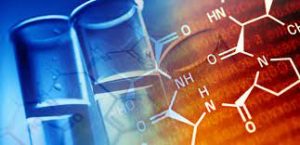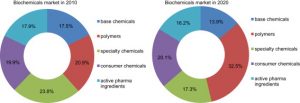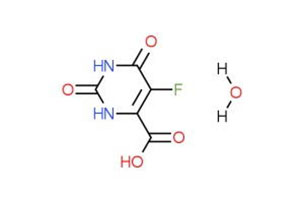Abstract
Human dimethylglycine dehydrogenase (hDMGDH) is a flavin adenine dinucleotide (FAD) and tetrahydrofolate (THF)-dependent mitochondrial matrix enzyme that is involved in choline degradation, one-carbon metabolism, and electron transfer to the respiratory chain. . The rare natural variant H109R causes a deficiency of dimethylglycine dehydrogenase leading to increased concentrations of dimethylglycine in the blood and urine. Until now, a detailed biochemical and structural characterization of hDMGDH was hampered by insufficient heterologous expression of the protein.
In the present study, we report the development of an intracellular heterologous expression system in Komagataella phaffii (previously known as Pichia pastoris) that provides an opportunity to determine kinetic parameters, spectroscopic properties, thermostability, and redox potential of hDMGDH. Furthermore, we have successfully crystallized the wild-type enzyme and determined the structure with a resolution of 3.1 Å. Structure-based analysis of our biochemical data provided new insights into the kinetic properties of the enzyme, in particular with respect to oxygen reactivity. A comparative study with the H109R variant demonstrated that the variant suffers from decreased protein stability, cofactor saturation, and substrate affinity.

Database: Structural data is available in the PDB database under accession number 5L46.
Keywords: X-ray crystallography; electron transfer; flavin adenine dinucleotide; genetic disease; recombinant protein expression.
Biochemists
Biochemists directly impact the quality and reproducibility of your results. Buffers, detergents, antibiotics and substrates are indispensable for any laboratory. Each technique or workflow in molecular biology, cell analysis, chromatographic separation, and protein detection requires specific biochemists with specific characteristics. Our Biochemicals Recombinants products are competitively priced and backed by our excellent customer service and commitment to quality.
Biochemists
The term biochemical can refer to any chemical compound that is part of the composition of living cells. Bio-based chemicals offer a sustainable alternative to chemicals based on fossil feedstocks. Developed from biomass, these chemicals can be structurally identical to existing chemicals (‘drop-in’ chemicals) or have new structures that offer new opportunities.
Examples of bio-based chemicals being developed by Wageningen University and research include:
- alcohols and acids
- biohydrogen
- diols and diacids
- Monomers for radical polymerization
- Bioaromatics based on lignin, carbohydrates and amino acids
- Derivatives of fatty acids from various sources
- Fine chemicals such as peptides and glucosamine glucans.
Investment in biochemical production capacity is starting to increase from a very low base. Rapid technical progress is also being made in regions such as the US, Asia and Brazil, with a particular focus on facilities using readily available sugar and starch feedstocks.
The global chemical market was estimated at 3,127 billion euros in 2012 and 4,012 billion dollars in 2020. In 2014, the European chemical industry generated a market of 673 billion euros, of which 558 billion euros in the European Union. There are several bio-based products on the market and in the EU. In 2011, the chemical industry used around 8.6 million tons of renewable raw materials (Cefic, 2014). Renewable raw materials include vegetable oils and animal fats, carbohydrates, sugar and starch, natural rubber, etc.

Sales of chemical products based on industrial biotechnology were estimated at around €135-150 billion in 2012 (9% of the chemical market) and €515 billion until 2020. The percentage of products derived from biotechnological processes will increase in all market segments: basic chemicals will increase from €16 billion in 2010 to €71 billion in 2020, polymers and fibres will increase from €19 billion to €167 billion, speciality chemicals will grow from €22 billion to €89 billion, consumer chemicals will grow from €18 billion to €104 billion and active pharmaceutical ingredients from €16 billion to €83 billion.
The share of biochemicals was estimated to be 3.5% for bio-based products, 9% for speciality chemicals, 12% for consumer chemicals and 34% for active pharmaceutical ingredients. For the EU, it was estimated that up to 30% of petroleum-derived chemicals and materials would be replaced by biobased products by 2030 (Scarlat et al, 2015).

